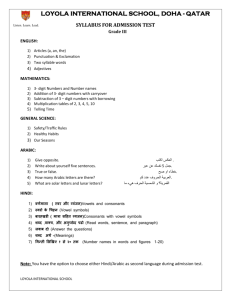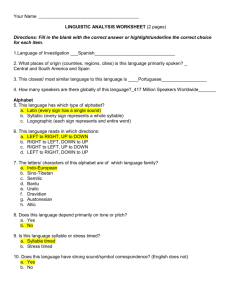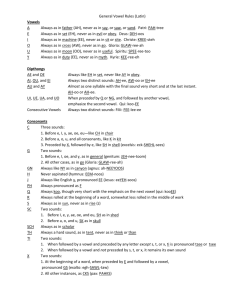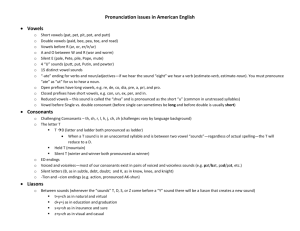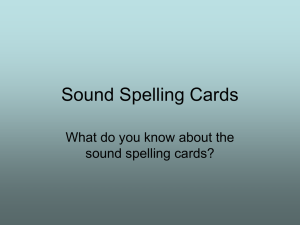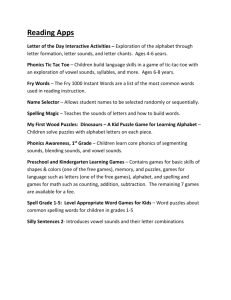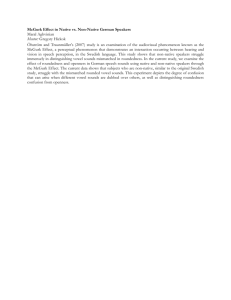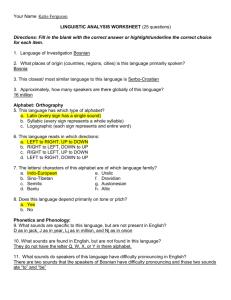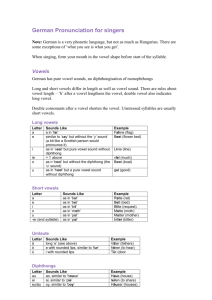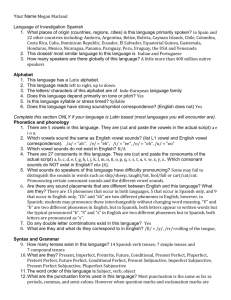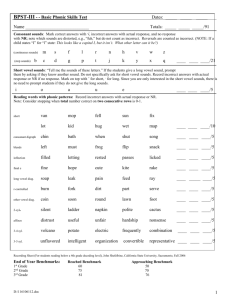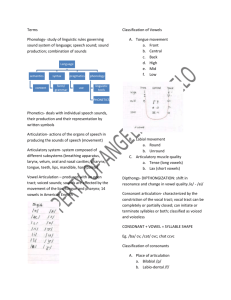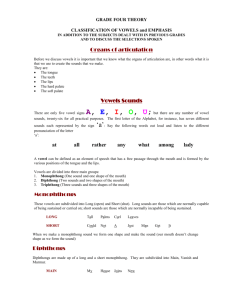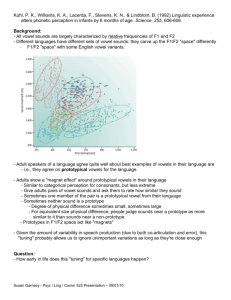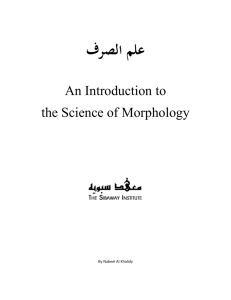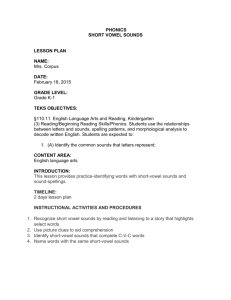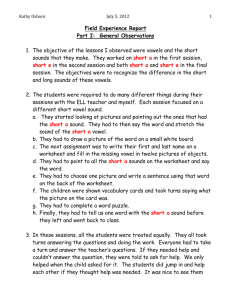Arabic
advertisement
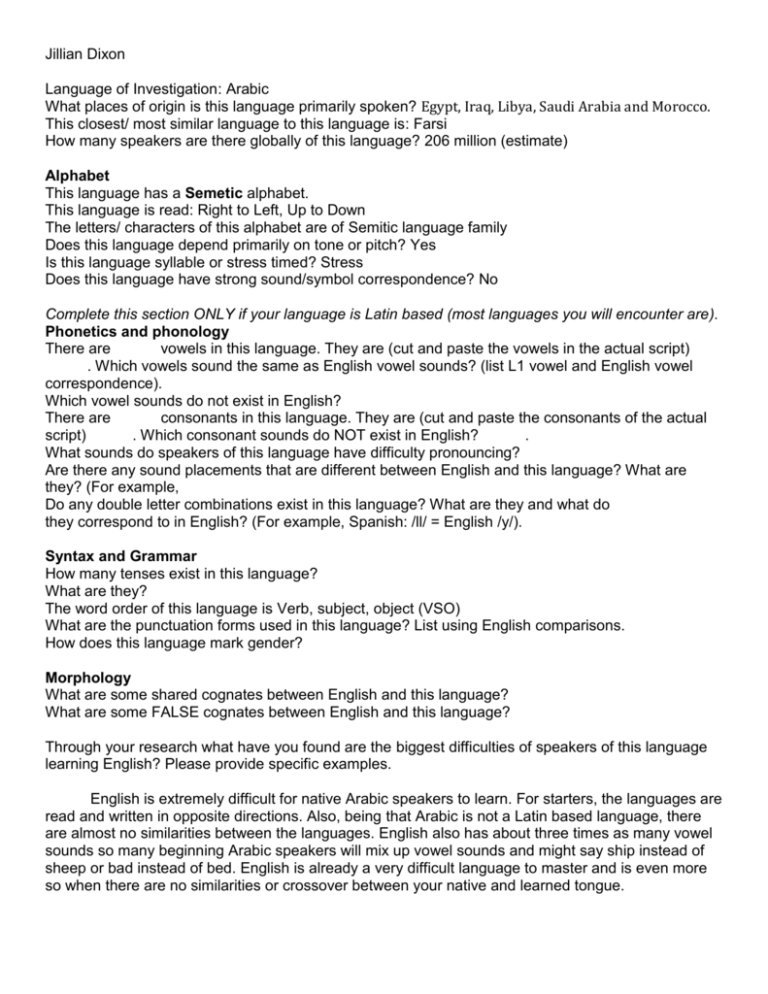
Jillian Dixon Language of Investigation: Arabic What places of origin is this language primarily spoken? Egypt, Iraq, Libya, Saudi Arabia and Morocco. This closest/ most similar language to this language is: Farsi How many speakers are there globally of this language? 206 million (estimate) Alphabet This language has a Semetic alphabet. This language is read: Right to Left, Up to Down The letters/ characters of this alphabet are of Semitic language family Does this language depend primarily on tone or pitch? Yes Is this language syllable or stress timed? Stress Does this language have strong sound/symbol correspondence? No Complete this section ONLY if your language is Latin based (most languages you will encounter are). Phonetics and phonology There are vowels in this language. They are (cut and paste the vowels in the actual script) . Which vowels sound the same as English vowel sounds? (list L1 vowel and English vowel correspondence). Which vowel sounds do not exist in English? There are consonants in this language. They are (cut and paste the consonants of the actual script) . Which consonant sounds do NOT exist in English? . What sounds do speakers of this language have difficulty pronouncing? Are there any sound placements that are different between English and this language? What are they? (For example, Do any double letter combinations exist in this language? What are they and what do they correspond to in English? (For example, Spanish: /ll/ = English /y/). Syntax and Grammar How many tenses exist in this language? What are they? The word order of this language is Verb, subject, object (VSO) What are the punctuation forms used in this language? List using English comparisons. How does this language mark gender? Morphology What are some shared cognates between English and this language? What are some FALSE cognates between English and this language? Through your research what have you found are the biggest difficulties of speakers of this language learning English? Please provide specific examples. English is extremely difficult for native Arabic speakers to learn. For starters, the languages are read and written in opposite directions. Also, being that Arabic is not a Latin based language, there are almost no similarities between the languages. English also has about three times as many vowel sounds so many beginning Arabic speakers will mix up vowel sounds and might say ship instead of sheep or bad instead of bed. English is already a very difficult language to master and is even more so when there are no similarities or crossover between your native and learned tongue. If you have an early production ELL who this language is their L1, what would be the most important thing you will teach them in regards to the difference between their language and English? The biggest thing I would want to teach them is how to construct a proper English statement. Such things like indefinite article’s that help to construct possession would be a very important. In English where we would say “The girl’s cat” a native Arabic speaker would say “Cat the girl”. This could obviously lead to a misinterpretation by an English speaker and would be a very important skill that would be a must learn subject.

